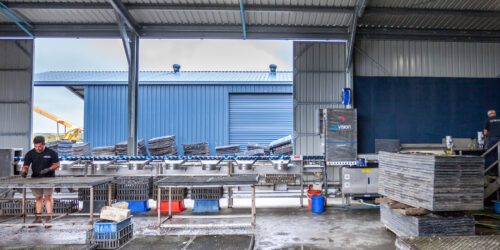We’re proud to partner with so many exceptional agricultural businesses, enhancing the overall productivity and excellence of the fresh produce industry globally.
- 11 November 2024
- gpgraders
- No Comments

Recovery in Australia’s Cherry & Stone Fruit Production Anticipated for 2024/25
With excellent cold chill hours and near-average rainfall forecasted for the coming months, production is set to increase for cherries and stone fruits as Australia heads into the 2024/2025 harvest season. A report from the USDA Foreign Agriculture Service, published in August 2024, suggests growers can anticipate higher fruit quality if rainfall remains steady or below average through the harvest period.
Cherries
The late rains of the 23/24 season caused a great deal of grief for the Australian cherry industry, particularly South Australia, New South Wales and Victoria, with the damage to crops leaving some growers opting to not bother picking fruit at all; the cost of sorting not making financial sense.
But things are looking up, with the report stating:
“Cherry production in Australia for MY 2024/25 is forecast to increase to 20,000 metric tons (MT), up from the downward-revised estimate of 18,500 MT for MY 2023/24. This production forecast is 17 percent above the previous five-year average and eight percent above the prior year. Despite this increase, the forecast remains subdued, aligning with two past results over recent years, despite growth in cherry plantings. The anticipated increase for MY 2024/25 is mainly due to expected favorable production conditions.”

Average to below-average temperatures throughout late autumn and winter in most key cherry-growing regions has delivered ample winter chill hours, promoting a solid bud burst. This positive start, coupled with a forecast of ‘around average rainfall’ for the main growing period of September to November supports the prediction of favourable outcomes for the season.
This promising forecast means a number of good things for Aussie growers, including increased local consumption, an opportunity to charge higher for a more premium product and a significantly greater opportunity in export markets, having fruit of sufficient quality to make the journey in prime condition.
Peaches & Nectarines
After a 5 year slide downwards for production volumes to the 2022/2023 season, the 2023/2024 stone fruit season saw significant improvement, despite the late rains wreaking havoc for growers.
The USDA FAS report states:
“MY 2024/25 production of peaches and nectarines is forecast to rise to 90,000 MT, an increase of 5,000MT (six percent) from the downward-revised MY 2023/24 estimate of 85,000 MT. Early-stage growing conditions for the forecast crop are expected to be positive. The forecast rise in production is mainly associated with a rebound from a lower-than-anticipated harvest in MY 2023/24, which was impacted by above-average rainfall around harvest time in Victoria and New South Wales, adversely affecting fruit quality.”
Again, sufficient winter chill hours has set bud burst off in the right direction and as per the cherry predictions, the average rainfall forecast should yield strong production volumes. Over the past three years, significantly above-average rainfall, especially in the eastern states of Australia, has resulted in irrigation storage dams being at high levels as of early July 2024. Accordingly, in the event of a rain shortfall, the opportunity to irrigate should not present any issues.
Technology & Planning is Key
In businesses at the mercy of the elements, planning for the expected AND unexpected is the difference between success and disaster. In the good years, it’s important to invest in technology that will have a positive impact on workflow, operations and capacity so that when the challenging times arrive, which they always will, you’re ready.
We know from the 2023/2024 season that for a few of our customers, an upgrade to the gpVision™ grading system allowed them to salvage the good fruit they did have left on the trees without exorbitant sorting costs, allowing them to re-coup some income, rather than sliding backwards. You could say it’s an insurance policy that paid out when it mattered.
GP Graders has the experience and knowledge to ensure you have the right solutions in place to not only save the tough years but capitalise in the good years. Get in touch today to discuss how we can help.
References:
https://fas.usda.gov/data/australia-stone-fruit-annual-9



